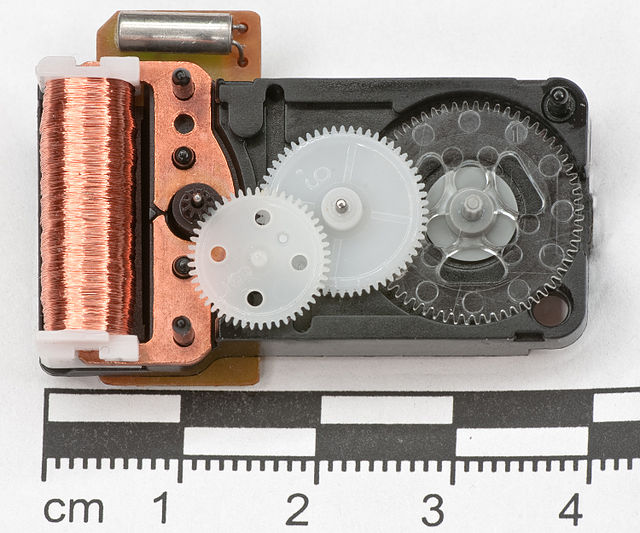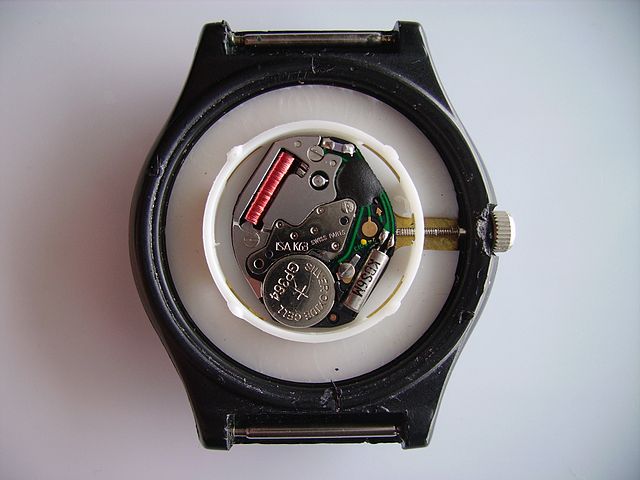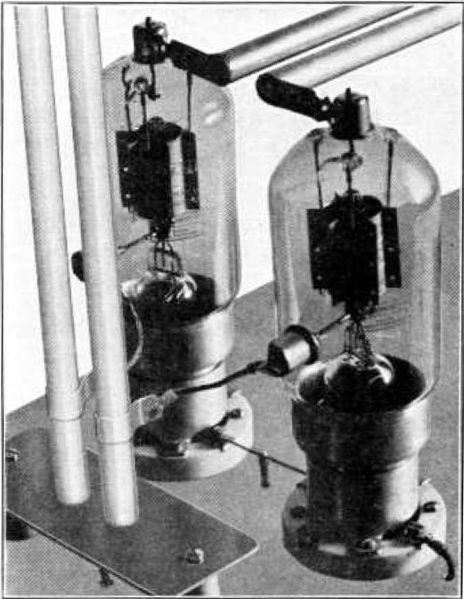Quartz clocks and quartz watches are timepieces that use an electronic oscillator regulated by a quartz crystal to keep time. This crystal oscillator creates a signal with very precise frequency, so that quartz clocks and watches are at least an order of magnitude more accurate than mechanical clocks. Generally, some form of digital logic counts the cycles of this signal and provides a numerical time display, usually in units of hours, minutes, and seconds.
Modern quartz wristwatch
Circuit board of an e block from a chronograph-wristwatch. Quartz oscillator crystal on right.
Disassembled analog quartz clockwork; quartz crystal oscillator (top left), Lavet-type stepping motor (left) with a black rotor sprocket and connected white and transparent gears (right). These gears control the movement of the second, minute and hour hands.
Basic quartz wristwatch movement. Bottom right: quartz crystal oscillator, left: button cell watch battery, top right: oscillator counter, digital frequency divider and driver for the stepping motor (under black epoxy), top left: the coil of the stepper motor that powers the watch hands.
An electronic oscillator is an electronic circuit that produces a periodic, oscillating or alternating current (AC) signal, usually a sine wave, square wave or a triangle wave, powered by a direct current (DC) source. Oscillators are found in many electronic devices, such as radio receivers, television sets, radio and television broadcast transmitters, computers, computer peripherals, cellphones, radar, and many other devices.
Crystal oscillator
A 120 MHz oscillator from 1938 using a parallel rod transmission line resonator (Lecher line). Transmission lines are widely used for UHF oscillators.
Image: Ganna gjenerators M31102 1







